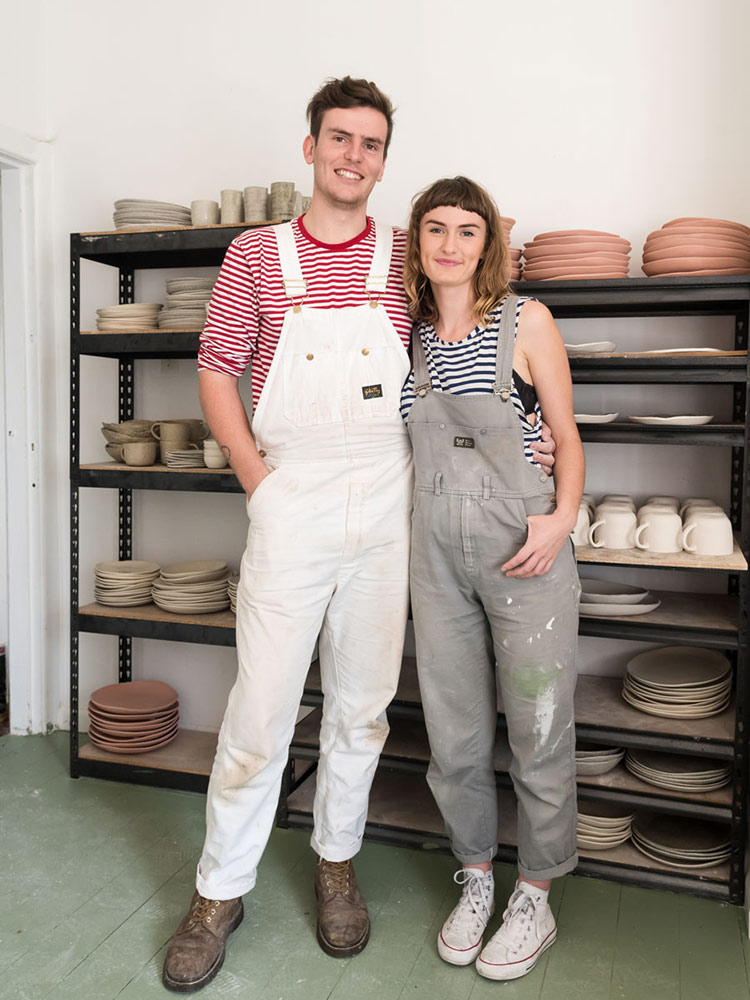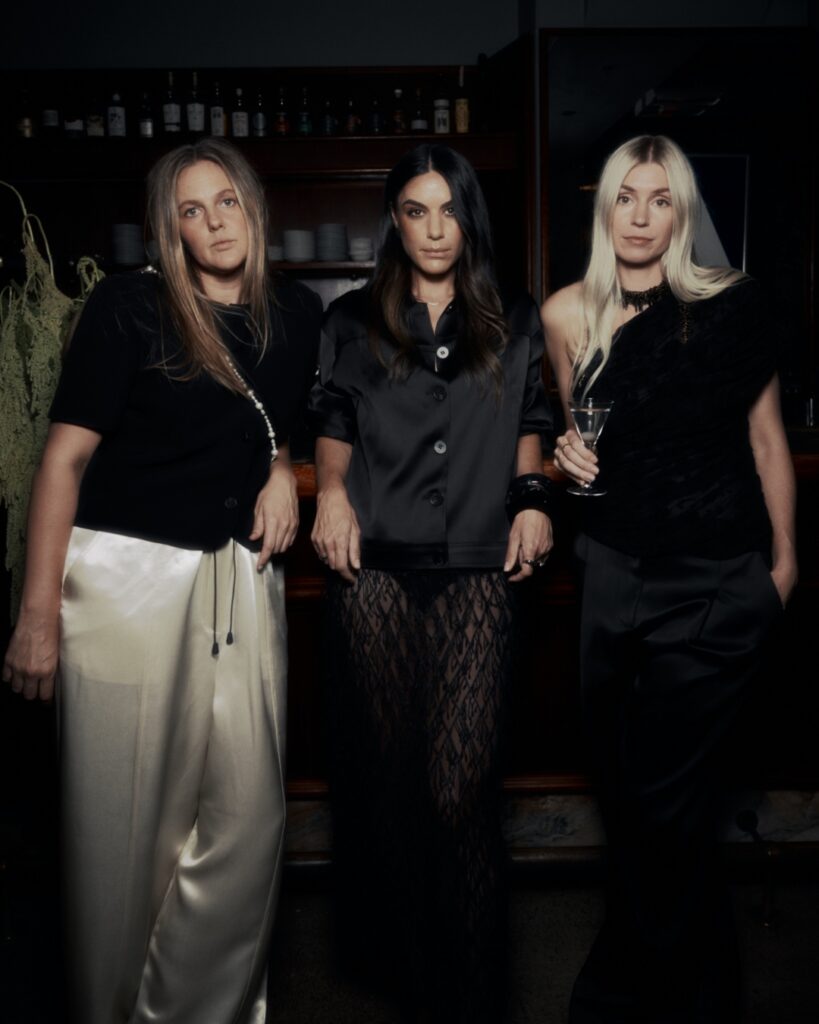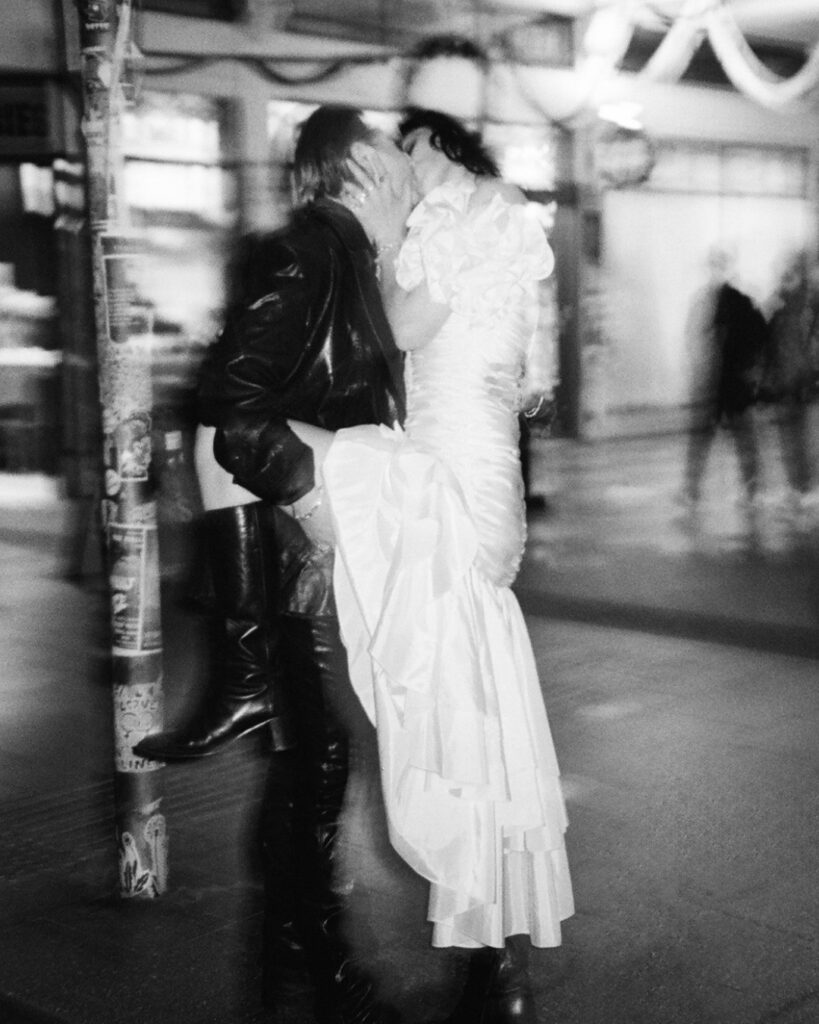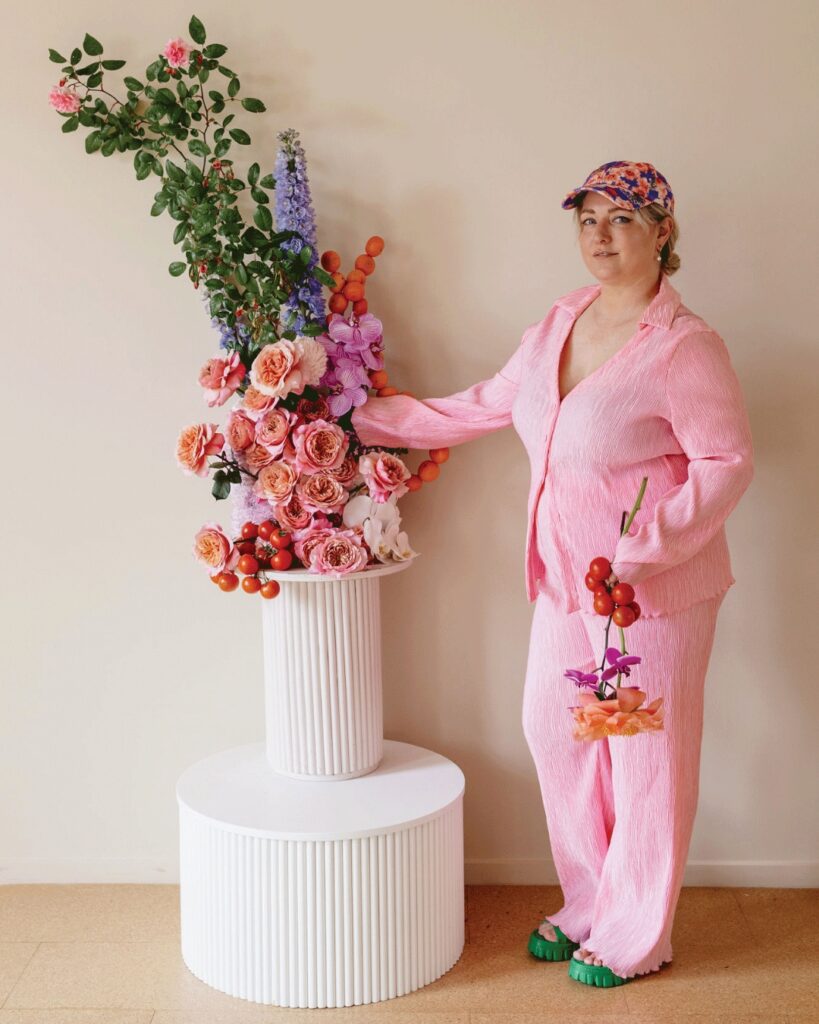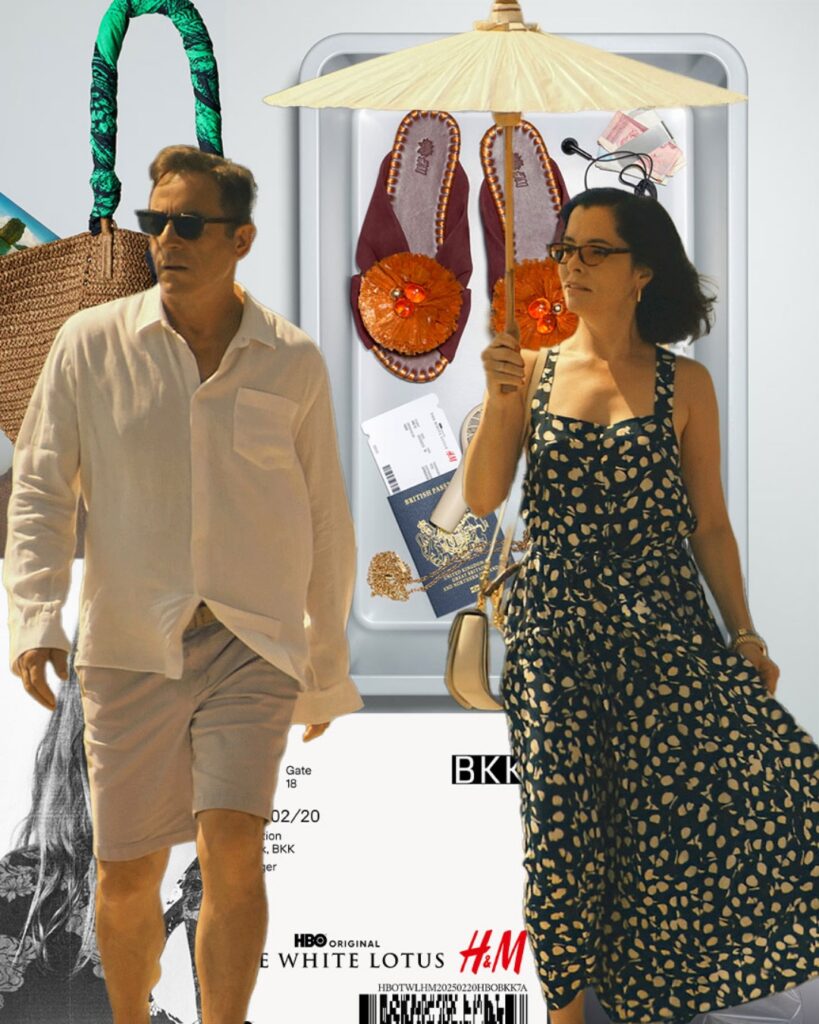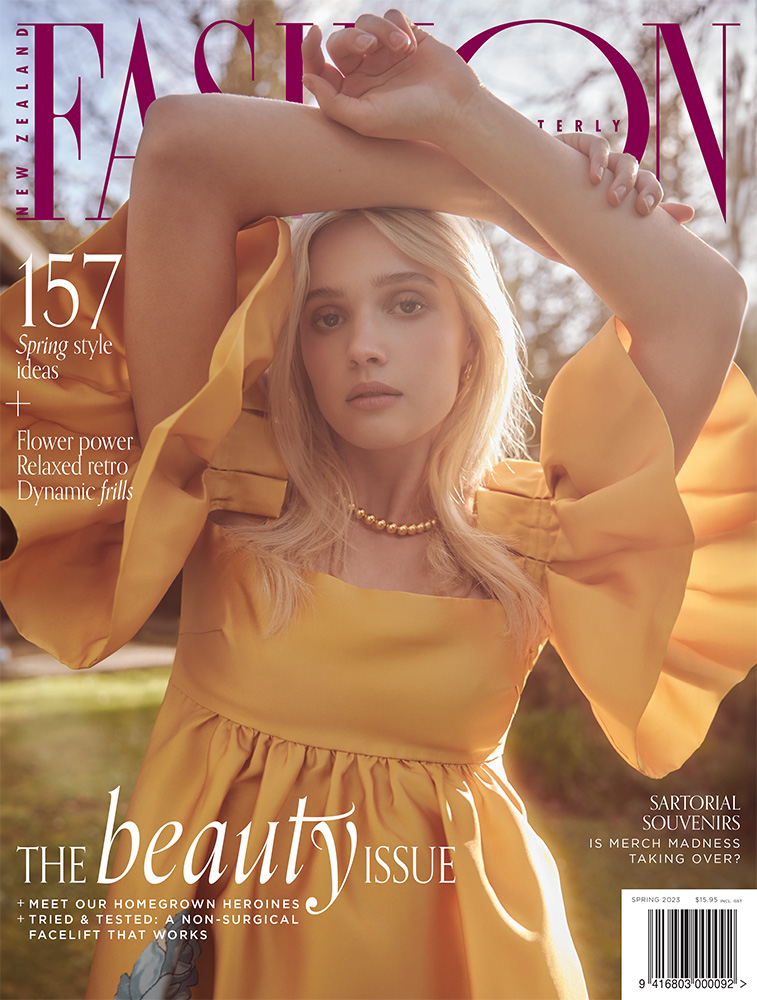In the current issue of Fashion Quarterly Life, we talk to Holly Houston of Houston Design Co. about her booming ceramics business, and what it’s meant to bring her partner, Chris Smart, on board.
We met the couple (who are, btw, the definition of #relationshipgoals) at their sun-drenched studio on Auckland’s North Shore. Here, Holly was kind enough to sit down at the pottery wheel and give us a demo, as well as answer a few extra questions.
Read on for details of the pottery-making process, and make sure you pick up a copy of Fashion Quarterly Life to find out more about Holly, Chris and Houston Design Co.
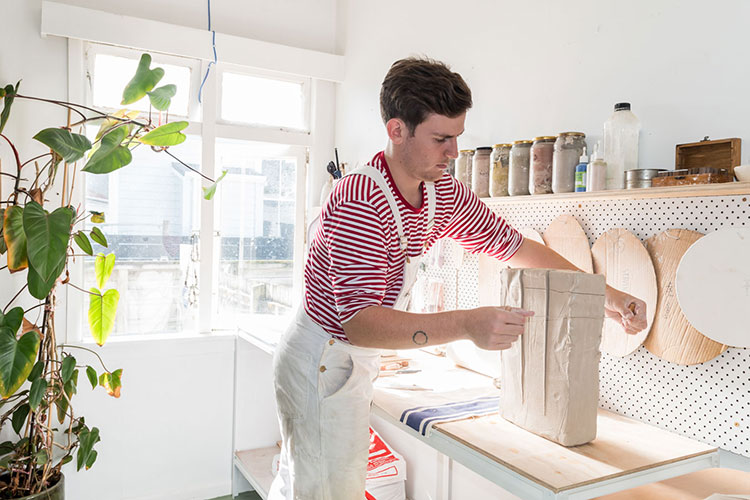
What roles do you both play in the business? What might a typical day look like for you?
Because it’s just the two of us, we both do a bit of everything. I do all the making part, throwing the cups on the wheel, forming the plates and platters. Chris does a lot of the back-end work – glazing, loading kilns, packing orders. We also have a great high school student, Marco, who comes and helps out after school sometimes with the masses of sponging and sanding that we have to do. I try to carve out some time between all the production to play with new ideas. We’re really lucky as our studio is out the back of my mum’s café, Little & Friday, so we break our day up with lots of coffee and treat breaks!
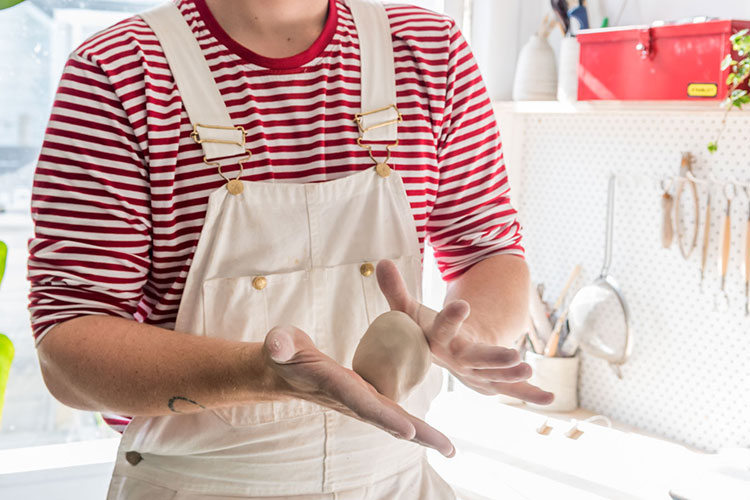
What does it mean to ‘throw on the wheel’?
It’s literally just picking up a piece of clay and whacking it down on the moving wheel. Then I have to centre it, and then I can pull it up into any kind of form. That’s how I make cups, or vases, or anything that has height and form. The other stuff that we make, like the plates and platters, we roll out on the wheel or by hand, and then we either pinch it up or if it’s a bowl, we might lay it over a piece of plaster until it dries and then we can flip it back. Once everything dries we’ll be at it for hours and hours with a wet sponge, smoothing everything over. Then we fire it – twice. The first time is just to take all the moisture out, so it’s not at a hot enough temperature to make it into something that will last forever, it’s just to get it hard enough to handle. After that we’ll dip it in a big bucket of glaze to make it look glassy, and fire it a second time to about 1240 degrees. Then it’s for life.
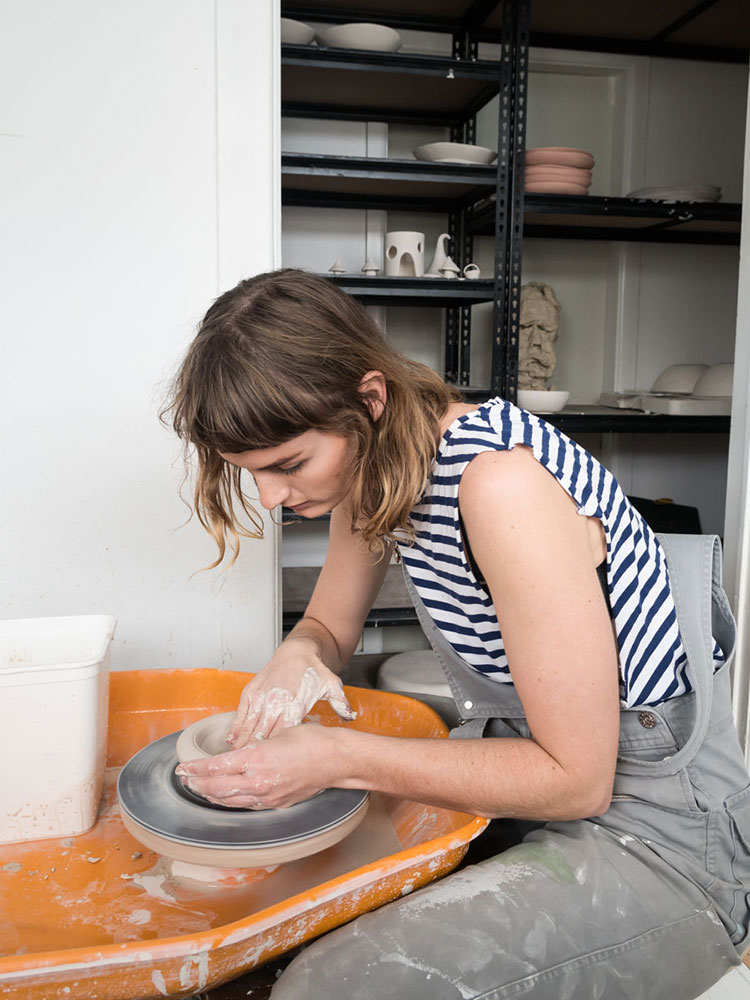
How many pieces would you make in a day?
It depends what size they are. Large bodies of clay are a lot harder to centre, which is that first bit where I was just pushing on the clay to get it into a pretty even mound. Last week a restaurant that I stock had a booking for 50 people and they needed 50 little cups within two weeks. That’s a really short turnaround time for pottery, because everything needs to dry really slowly so it doesn’t break. I just had to pump them all out in one day – and it was actually 75 cups, not 50, because there was a high chance some wouldn’t work out, and I couldn’t take the risk. My back was pretty sore the next day!
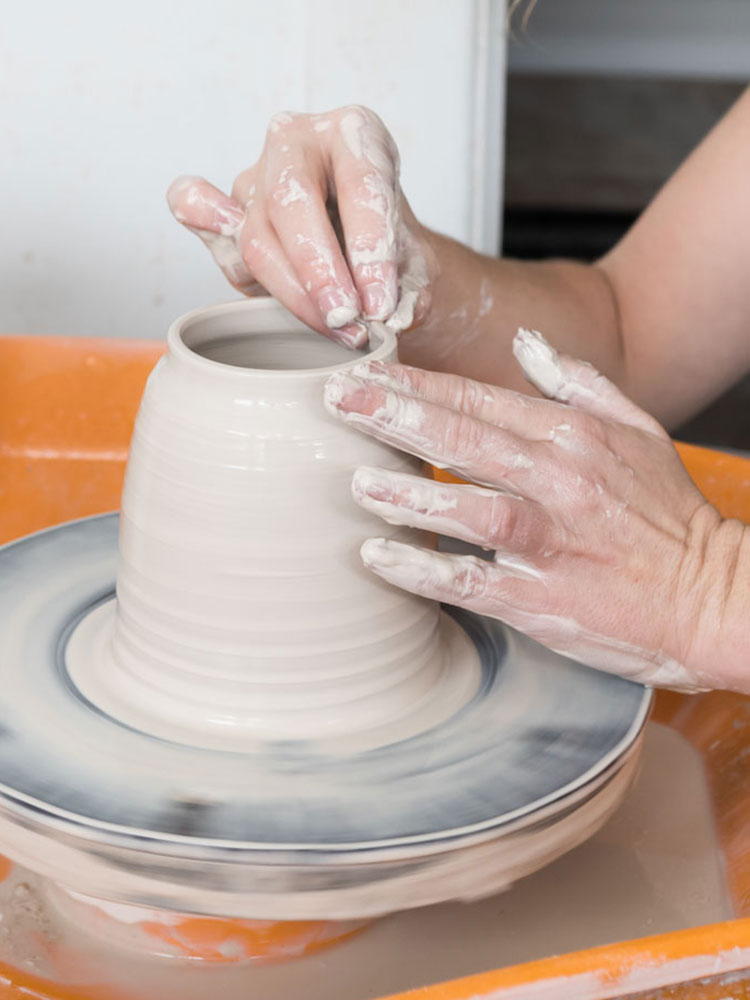
How many sacks of clay do you go through at a time?
We recently bought a tonne of clay. Like, a literal tonne. They dumped it on a palette in the driveway and we had to move it one bag at a time. But we’ve gone through half of it in a month. We’re just trying to crank out heaps of stuff at the moment and build heaps of stock because I get really stressed out when I have heaps of outstanding orders and nothing on the shelves!
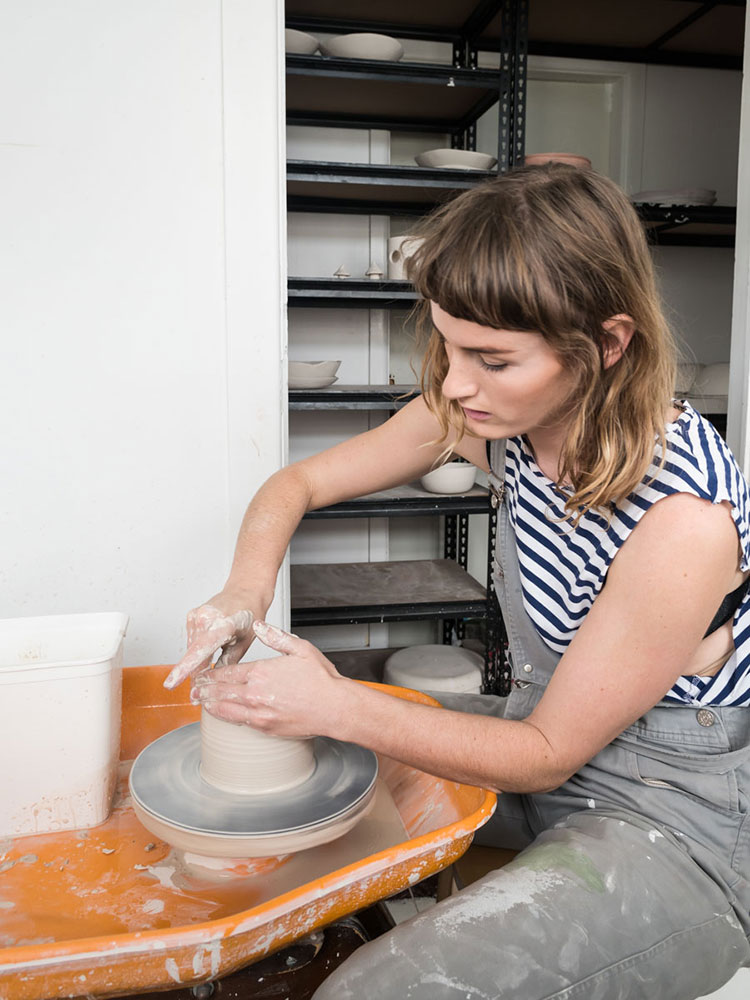
Your signature pieces are probably your clay plates flecked with sand collected from West Coast beaches. Where did that idea come from?
I wanted to work with a clay that had a speckle through it, and after talking with some potter friends they suggested I try black sand. That’s the great thing about potters, they are all so generous with their time and knowledge. I haven’t experienced any competitive or bitter malarky I expect you find in most industries.
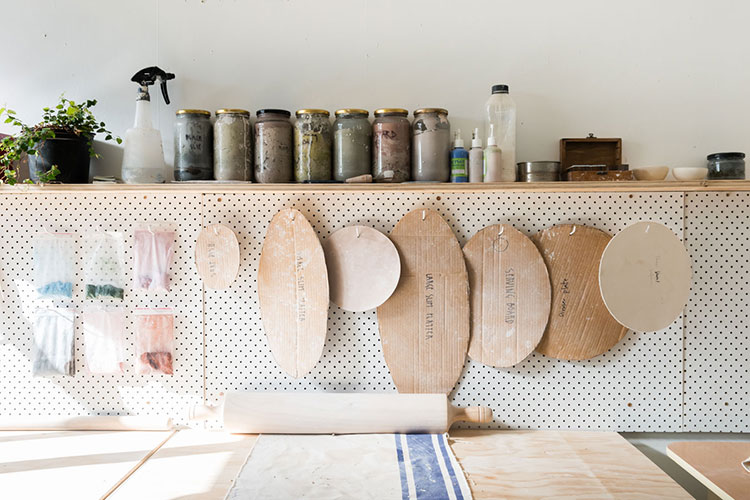
You don’t use molds or casts in the making of your ceramics, so each piece you create is 100% individual. Why is it important for you to do things this way, given that it undoubtedly makes your job very time consuming?
I’ve always been process driven. People always tell me I should outsource my work, but for me it’s the making that’s the important bit. I love to work with my hands. If you’ve seen them, you’ll know, they ain’t so pretty – they’re working lady hands, but they are the most precious thing I possess. We mix all the sand into the clay by hand – it’s so much work, my physiotherapist hates me for it. But when you get these minor imperfections in the work, where the sand hasn’t been perfectly dispersed and it clusters or marbles a little, that to me is the greatest thing. I don’t see it is a flaw, I see it as an improvement. Proof that it was made by two hands. It’s what keeps me going back.


